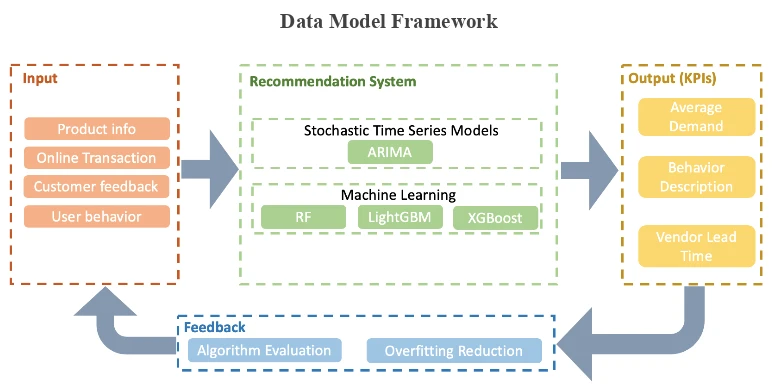
E-commerce Inventory Forecasting Techniques
In the ever-evolving realm of e-commerce, inventory management is a pivotal aspect that can make or break your business. To thrive in this highly competitive landscape, it's essential to adopt robust E-commerce Inventory Forecasting Techniques. In this comprehensive guide, we'll delve deep into these techniques, exploring their intricacies and intricacies and the profound impact they can have on your e-commerce venture.
Understanding the Significance of E-commerce Inventory Forecasting
The Essence of E-commerce Inventory Forecasting
E-commerce Inventory Forecasting is the art and science of predicting what products you should have in stock to meet customer demand effectively. It ensures that you have the right quantity of products, avoiding overstocking or understocking, which can be costly for your business.
The Power of Data-Driven Decision-Making
Effective forecasting hinges on data analysis. By leveraging historical sales data, market trends, and other relevant information, you can make informed decisions about your inventory. This data-driven approach minimizes guesswork and optimizes your stock levels.
The Impact on Customer Satisfaction
Accurate inventory forecasting directly correlates with customer satisfaction. When you consistently have the products customers desire in stock, you can fulfill orders promptly, resulting in happy and loyal customers.
E-commerce Inventory Forecasting Techniques
1. Demand Forecasting Models
Demand forecasting models are the cornerstone of inventory forecasting. They employ statistical methods to predict future demand based on historical data. Popular models include time series analysis, regression analysis, and moving averages.
2. Seasonal Analysis
Understanding seasonal trends is vital for e-commerce businesses. By identifying patterns and adjusting your inventory accordingly, you can maximize profits during peak seasons and avoid excess stock during off-seasons.
3. Safety Stock Calculation
Safety stock acts as a buffer against unexpected demand spikes or delays in supply. Calculating the right safety stock levels is crucial to ensure you don't run out of products when customers are ready to buy.
4. ABC Analysis
The ABC analysis classifies your inventory into three categories: A (high-value), B (medium-value), and C (low-value). This technique helps prioritize inventory management efforts, focusing on the most critical products.
5. Vendor Managed Inventory (VMI)
VMI is a collaborative approach where suppliers manage your inventory. It optimizes the supply chain, reduces carrying costs, and ensures a continuous flow of products.
6. Just-in-Time (JIT) Inventory
JIT inventory minimizes holding costs by ordering products only as needed. This technique reduces the financial burden of carrying excess stock.
7. Advanced Inventory Software
Leveraging cutting-edge inventory software with AI and machine learning capabilities can enhance your forecasting accuracy. These tools analyze vast datasets and generate real-time insights.
Generating Images for Better Understanding
To aid in your comprehension of these techniques, we've crafted a series of illustrative images. These visuals provide a visual reference for the discussed concepts and strategies, making your learning experience more engaging.
Frequently Asked Questions
Q1: Why is E-commerce Inventory Forecasting essential for my business?
E-commerce Inventory Forecasting ensures that you always have the right products in stock, improving customer satisfaction and maximizing profitability.
Q2: How can I implement E-commerce Inventory Forecasting in my business?
You can start by collecting historical sales data and exploring demand forecasting models. It's advisable to invest in advanced inventory software to enhance accuracy.
Q3: What are the common challenges in E-commerce Inventory Forecasting?
Challenges include dealing with seasonality, managing safety stock, and adapting to dynamic market changes.
Q4: Can E-commerce Inventory Forecasting work for small businesses?
Absolutely. E-commerce Inventory Forecasting is adaptable and beneficial for businesses of all sizes.
Q5: Are there any risks associated with E-commerce Inventory Forecasting?
While it offers numerous benefits, there are potential risks, such as over-reliance on data and the cost of implementing advanced software.
Q6: How often should I update my inventory forecasts?
The frequency of updates depends on your industry and market volatility. It's essential to review and adjust your forecasts regularly to stay competitive.
In the fast-paced world of e-commerce, adopting effective E-commerce Inventory Forecasting Techniques is paramount to your business's success. By understanding and implementing these strategies, you can navigate the challenges of inventory management, delight your customers, and boost your profitability. Now, take this knowledge and apply it to your e-commerce venture to secure a prosperous future.
Summary: Dive into the world of E-commerce Inventory Forecasting Techniques, optimize your inventory management, and ensure customer satisfaction. Explore demand forecasting models, seasonal analysis, safety stock calculation, and more.
